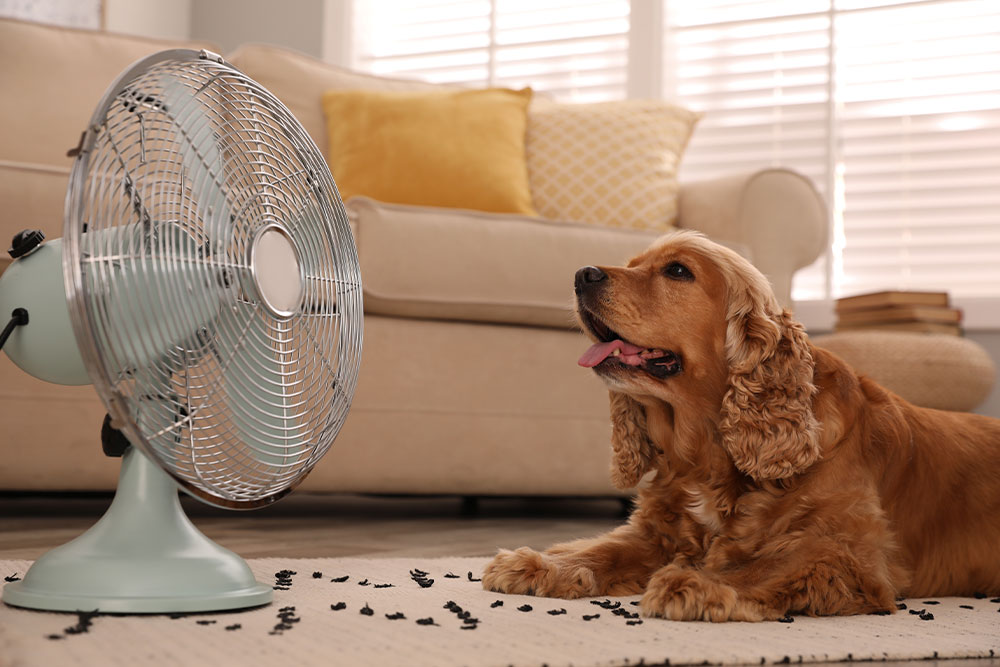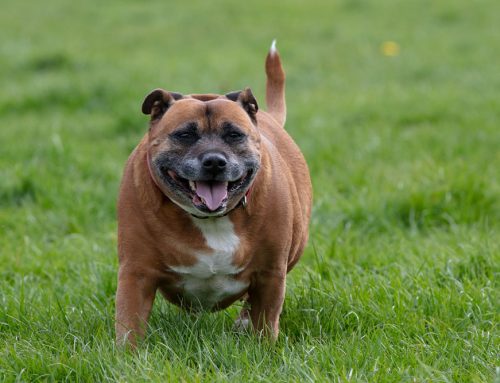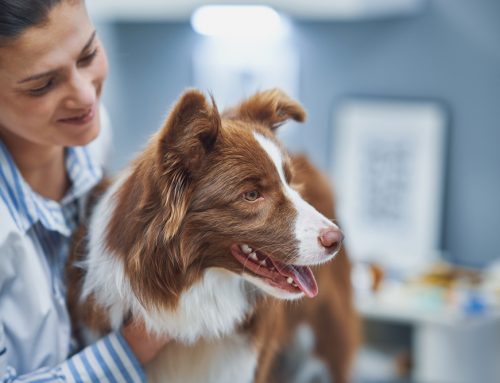Welcome Summer- With Caution
Warm weather is a welcome invitation to head outdoors and soak up the sun, but for pets in San Mateo and throughout the Bay Area, summer heat can quickly become a serious threat. At Omega Veterinary Group, we know how much you love sharing adventures with your furry companions, and we want to help you do it safely.
Extreme heat can lead to life-threatening emergencies such as heatstroke, dehydration, or paw pad injuries. Prevention, preparation, and education are the keys to keeping your pet healthy and happy all season long.
Why Pets Overheat Faster Than People
Pets don’t experience heat like we do. Dogs and cats only sweat through their paws, and rely primarily on panting to regulate body temperature. Combine this with a full coat of fur and limited ability to cool off independently, and you have a recipe for rapid overheating.
Unlike people, pets can’t grab a drink or find shade on their own. Your pet depends entirely on you to monitor their comfort, hydration, and environment. That means:
- Never leaving pets in parked cars—even for a moment
- Ensuring water and shade are accessible at all times
- Avoiding high-exertion activities in the heat
- Keeping long or double coats properly groomed
Even well-meaning owners can overlook danger signs, so it’s crucial to be vigilant.
Who’s Most At Risk? Heat-Sensitive Pets to Watch Closely
While any pet can overheat, some are more vulnerable than others. Know if your dog or cat falls into one of these categories:
| Risk Factor | Why It Matters |
| Brachycephalic breeds | Flat-faced pets like Bulldogs and Persians have restricted airways |
| Overweight pets | Extra body fat holds heat and hinders cooling |
| Senior pets | Age-related heart or lung conditions reduce heat tolerance |
| Dark-coated animals | Dark fur absorbs more heat from sunlight |
| Thick or double coats | Fur traps heat, especially if matted or not groomed |
Read: Brachycephalic Research – Purina Pro Club
Easing into Summer Activity
A sudden jump from lazy winter weekends to rigorous summer hikes can stress your pet’s body.
- Start slow: Build stamina with short walks during early morning or evening hours.
- Paw pad protection: Soft winter paws are vulnerable to burns on hot sidewalks. Walking On Sunshine: Protecting Pet Paws
- Groom smart: Brush out winter undercoats and trim excess fur (without shaving too short).
Recognizing the Red Flags of Heatstroke
Early Symptoms
- Heavy panting
- Bright red gums
- Drooling
- Seeking shade
Advanced Warning Signs
- Vomiting or diarrhea
- Lethargy or collapse
- Discolored gums (pale or blue)
- Seizures
If you suspect heatstroke:
- Move your pet to a shaded, cool area
- Offer small sips of cool water
- Apply damp (not icy) towels to paws and belly
- Use fans or air conditioning
- Contact your veterinarian immediately
Too Hot to Handle: Heatstroke in Pets
Post-Heatstroke Complications
Even if your pet recovers from the initial episode, internal damage may follow. Monitoring for 72 hours after a heatstroke is vital.
Possible complications include:
- Kidney failure
- Liver damage or internal bleeding
- Digestive tract injury
- Brain swelling or seizures
- Disseminated Intravascular Coagulation (DIC), a life-threatening clotting disorder
Summer Hazards You May Not Think About
Sunburn Isn’t Just for Humans
Pets with light or thin coats are prone to sunburn on noses, ears, bellies, and other exposed skin. UV-protective clothing or pet-safe sunscreens may help.
Pets and Sunscreen Myths – ASPCA
Do Dogs Need Sunscreen? – NBC News
Scorched Paw Pads
Sidewalks, sand, and decking can quickly reach dangerous temperatures. Test with your hand or wear breathable dog booties for walks.
Eye Protection at Elevation
High-elevation hikes can worsen UV-sensitive conditions like pannus in German Shepherds. UV-protective eyewear like Doggles may help.
Creative, Cooling Fun for Hot Days
Help your pet beat the heat with enrichment and play:
Water Games
- Kiddie pools or sprinklers
- Shallow streams or lakes (with supervision)
Frozen Treat Ideas
- Ice molds with broth, berries, or soaked kibble
- Yogurt-stuffed frozen Kongs
Cooling Tools
- Cooling vests or beds
- Wet towels or misting fans
- Ice baths for paws or bellies
Keeping Cool: Summer Boredom Busters for Pets
Timing is Everything: Safer Outdoor Activities
- Walk early (before 9 am) or late (after 7 pm)
- Bring more water than you think you’ll need
- Schedule shade breaks often
- Know your dog’s limits and cut play short if they seem tired
Cooling Strategies for Indoor Pets
Inside doesn’t always mean safe. On very hot days, interior temps can rise fast.
- Keep AC or fans running
- Give access to tile or hardwood floors
- Create shaded, ventilated nap spots
- Keep them mentally stimulated with puzzle feeders, nose work, or training games
Outdoor Cats: Don’t Forget Feline Friends
Free-roaming cats are at risk of dehydration, sunburn, or worse.
Tips for safety:
- Provide shaded hideouts
- Ensure multiple water sources outdoors
- Bring them inside during midday heat or heat advisories
Cool Cats: Summer Tips for Outdoor Cats – AAHA
Summer Brings More Than Just Heat
Watch for these additional seasonal risks:
- BBQ Food Dangers: Bones, onions, grapes, and greasy meats are all harmful to pets.
- Noise Anxiety: Fireworks can cause pets to flee or hide. Secure them indoors with white noise.
- Insect Threats: Bee stings, flea infestations, tick bites, and mosquitoes are rampant. Keep your pet on a vet-recommended parasite prevention plan.
- Snake Encounters: Learn what snakes live in your area and how to react in an emergency.
Snake Safety by Region – CroFab
6 Summertime Dangers for Pets – AAHA
Summer Safety Golden Rules
- Never leave your pet in a parked vehicle
- Know the heat index and humidity risk
- Always offer clean, cool drinking water
- Don’t assume they’ll show signs of heat distress until it’s too late
Let’s Keep Summer Safe for Your Pet
At Omega Veterinary Group, we believe that summertime should be full of tail wags, not emergency visits. Whether your pet loves hiking coastal trails or lounging on the patio, our team is here to help you create a personalized summer care plan that suits their lifestyle, health needs, and activity level.
Be proactive. Schedule your pet’s summer wellness exam today to assess heat risk, update parasite prevention, and make sure your pet is ready for the season ahead.
Book an Appointment or Explore Our Services today.







Leave A Comment